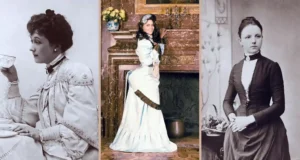The key purpose of Lady Justice’s blindfold is to symbolize impartiality – the principle that justice should be blind to all irrelevant factors and only consider the facts of the case.
Lady Justice wears a blindfold to represent two core ideals. First, that justice should be applied fairly and evenly to all, regardless of wealth, status, race, gender, or other distinguishing features. Her blindfold indicates she cannot see the identities of those who stand before her.
Second, the blindfold signifies that justice should be based solely on the facts and evidence presented, and no preconceived biases or pre-judgments should influence the outcome.
The blindfold is a reminder that a just legal system treats all people equally and offers everybody the same fair chance. It suggests that factors unrelated to a case, such as personal qualities, connections, or identity, should not affect justice application.
Ultimately, the blindfold symbolizes the goal of a principled and fair judiciary that evaluates each case on its own individual merits.
The image of Lady Justice wearing a blindfold endures because it encapsulates a fundamental aspiration of law – that true justice is impartial and meted out objectively, without prejudice.
The blindfold represents the nobility of this ideal, though some argue the reality often falls short of the symbolism. Still, the blindfold of Lady Justice stands as a powerful and timeless vision of what justice is meant to be.
What is the origin of lady justice wearing a blindfold?
While the precise origins of Lady Justice’s blindfold remain unclear, several possible explanations exist for its inclusion in her depiction. Overall, the blindfold appears to have been added sometime in the 16th century as a symbolic representation of judicial impartiality and blindness to irrelevant factors.
One possibility is that the blindfold originated as a satirical element meant to criticize the failures and injustices of the legal system. The blindfold could symbolize that justice was “blind” to the injustices happening before it. Over time, the meaning shifted from criticism to representing the ideal that justice should be impartial and objective.
Ancient goddess figures like the Egyptian Maat and Greek Themis were sometimes depicted wearing blindfolds, suggesting this may have also influenced Lady Justice.
The blindfold of these goddesses represented their ability to render fair judgments based on truth rather than external appearances. This concept of impartial blindness may have inspired Lady Justice’s blindfold.

The blindfold may also derive from the practical ritual of blindfolding actual judges and jurors to prevent them from being swayed by the appearances of those on trial.
This emphasizes that justice should be based on evidence, not physical attributes. The blindfold of Lady Justice could metaphorically represent this practice.
While the precise history is unclear, Lady Justice’s blindfold likely emerged in the 16th century as a symbolic representation of key principles: that justice must be impartial, objective, blind to irrelevant factors, and based solely on evidence.
Over time, the blindfold has epitomized the goals of fairness and equal treatment under the law.
How has the depiction of Lady Justice changed over time?
The depiction of Lady Justice has evolved in several key ways over the centuries, though the central symbols of scales, sword, and blindfold have mostly remained the same.
In ancient Greece and Rome, goddesses Themis, and Justitia represented justice but were never shown blindfolded. They emphasized justice as fair judgment and the rule of law.
During the Middle Ages, Lady Justice was portrayed as stern and vengeful, perhaps reflecting a harsher notion of justice at the time. She held a raised sword ready to strike and sternly clutched the scales.
The Renaissance brought a more graceful depiction of Lady Justice, often shown with flowing hair, softer features, and a newly added blindfold. This suggests ideals of impartiality and objectivity started to influence the portrayal.
Modern images tend towards a more abstract, simplified figure with minimal details. The focus is on key symbols over physical characteristics, representing ideals over individual identity. The blindfold, in particular, has become ubiquitous, representing impartiality regardless of wealth, power, or status.
Overall, while central symbols have persisted, the portrayal of Lady Justice has evolved to reflect changing notions of justice over time.
Ancient goddesses emphasized fair judgment, and the Middle Ages stressed vengeance; the Renaissance advocated impartiality, and modern images focused on abstract ideals. Through it all, Lady Justice endures as a powerful symbol of the quest for equal justice under the law.
What is the significance of Lady Justice’s blindfold?
The blindfold worn by Lady Justice signifies several key principles related to impartiality and fairness within the justice system.
First, the blindfold represents the ideal of impartiality – the notion that justice should be applied without regard to wealth, power, or status. Lady Justice’s blindfolded face indicates she cannot see the identities of those who appear before her. She is blind to irrelevant attributes, focusing only on facts and evidence.
Second, it denotes equal treatment under the law. The blindfold suggests that all individuals deserve equal justice regardless of their background or appearance. Everyone is on a level playing field in the eyes of Lady Justice.
Third, the blindfold represents the objectivity and lack of bias that should characterize the legal system. It implies justice must be based solely on the merits of a case, the facts presented, and relevant laws. Personal views and subjective opinions have no place in the court of Lady Justice.
Although originally added to criticize the failures of justice, over time, the blindfold was reinterpreted to signify impartiality and fairness as ideals to strive for.
While not essential, the blindfold has become a defining characteristic of Lady Justice. It is a constant reminder that a fair and just legal system treats all people equally, evaluates each case on its own merits, and renders judgments impartially based on relevant evidence alone.
The blindfolded face of Lady Justice symbolizes the justice system’s highest aspirations.
How has the meaning of Lady Justice’s blindfold evolved over time?
The symbolism of Lady Justice’s blindfold has shifted dramatically over the centuries to reflect changing perceptions of justice and fairness. The blindfold began as satire, criticizing the injustice within legal systems.
However, over time it has come to represent an aspiration toward impartiality and equal treatment under the law.
When Lady Justice was first depicted wearing a blindfold in the 16th century, the intention was ironic. It highlighted how justice was “blind” to the injustices happening before it. The blindfold exposed the failings and biases within real courts.
However, in the Enlightenment era, the ideals of rationality and individual rights spread. There was a new focus on impartiality, objectivity, and equality as core principles justice systems should uphold.
The blindfold’s meaning transformed from criticism to representing these ideals. It symbolized how justice should be “blind” to people’s outward identities and backgrounds.
Over subsequent centuries, various social movements further clarified the blindfold’s meaning. The Civil Rights Movement emphasized that justice must be equally applied regardless of race. The Women’s Movement and #MeToo highlighted the need for impartiality across gender.
These transformations showed that true blindness requires acknowledging – and actively working to overcome – implicit biases within systems.
Today, the blindfold still symbolizes a hopeful aspiration. It reminds us that justice systems should strive for impartiality, objectivity, and equality before the law.
They should “see” only the facts and evidence of each case. But it also acknowledges these ideals are not yet fulfilled. The legal system still fails to remain “blind” to factors like race, gender, and wealth.
As its meaning has evolved, Lady Justice’s blindfold has come to represent both an ideal and a call to action. It points toward a vision of more impartial, unbiased justice. But it also demands we acknowledge work still needed to make that vision a reality.
Are there any exceptions to Lady Justice wearing a blindfold?
While Lady Justice is most commonly depicted wearing a blindfold, there are some notable exceptions where she is shown without one. These exceptions provide alternative perspectives on the role of impartiality in achieving just outcomes.
The statue of Lady Justice atop the Old Bailey courthouse in London is perhaps the most well-known example of Lady Justice without a blindfold. This deviation from the traditional portrayal underscores the U.K. legal system’s emphasis on pragmatism over rigid adherence to principles of impartiality. British courts often balance pragmatism with fairness to achieve just outcomes.
However, in the United States, Lady Justice – seen at the Supreme Court building – typically does wear a blindfold. This reflects the U.S. legal system’s greater emphasis on impartiality, objectivity, and “blind” application of law.

The inclusion of the blindfold symbolizes the need for judges to remain indifferent to the identities or circumstances of those involved in a case.
In artistic representations, Lady Justice may be depicted either with or without a blindfold. Those showing her eyes exposed suggest a vision of justice that acknowledges the limitations of complete impartiality.
They represent the notion that justice sometimes requires considering context and identity to deliver fair outcomes.
Exceptions to Lady Justice’s traditional blindfold reveal alternative perspectives on the complex relationship between impartiality and justice. While impartiality remains an important principle, a strictly “blind” application of law may fail to deliver justice in all cases.
Pragmatism, context, and acknowledging identity factors can also help achieve more just and equitable outcomes. The ideal balance remains open to interpretation.
The blindfold represents an aspirational goal of a perfectly impartial legal system. But in practice, some flexibility and nuance may be needed to deliver truly just outcomes for all.
Exceptions to Lady Justice’s blindfold remind us that the pursuit of impartiality alone is not always sufficient – other factors must also be considered to achieve equal justice under the law.
Are there any cultural or historical reasons for Lady Justice not wearing a blindfold?
In some depictions, Lady Justice is shown without her traditional blindfold. There are several cultural and historical reasons why this may occur.
First, ancient precedents may hold influence. The original goddesses of justice, like Themis and Justitia, were not shown blindfolded. This tradition could inspire some contemporary renderings.
Second, the blindfold may carry negative interpretations in some cultures. It could symbolize weakness, vulnerability, or ignorance rather than impartiality. Such interpretations make depicting Lady Justice blindfolded inappropriate.
Third, the blindfold originated as satire, critiquing the “blindness” of real courts to injustice. Even today, some view it as representing injustice rather than neutrality. Alternative depictions may embrace this perspective.
Fourth, early Lady Justice images’ initial lack of a blindfold shows it was not essential historically. Its inclusion over time was interpretive, leaving room for variations.
Fifth, critics argue that the blindfold ignores systemic biases within legal systems. They believe true impartiality requires acknowledging identity factors – reflected in depictions showing Lady Justice’s eyes.
Sixth, in some places, the decision to omit the blindfold stems simply from artistic or decorative preferences. The larger symbolism of justice remains.
Ultimately, whether Lady Justice wears a blindfold comes down to interpretation. Different cultures and eras emphasize varied justice aspects like vigilance, accommodation of identity, and “blind” neutrality.
Renderings with or without the blindfold reflect these priorities. Neither is inherently “right” – both reveal elemental truths about law and fairness.
Which blindfolded Greek goddess figure does justice is blind come from??
Themis, the Greek goddess of justice, is the source of the concept”justice is blind.”
The popular saying “justice is blind” stems from the depiction of ancient Greek and Roman goddesses of justice wearing blindfolds. Of these goddesses, Themis – the Greek goddess of law and divine justice – best exemplifies the concept of impartiality represented by a blindfolded figure.
Themis was typically depicted carrying scales and a scepter. The scales represented her role in fairly weighing different considerations to pass judgments according to law.
The scepter signified her authority as an arbiter of justice. Occasionally, Themis was also shown wearing a blindfold across her eyes.
The blindfold served to symbolize Themis’ impartiality and objectivity in administering justice. As goddess of law, Themis ensured justice was meted out impartially, with no favoritism.
The blindfold indicated she could not see the identities of those who came before her for judgment. She remained indifferent to people’s outward appearances, social status, or wealth.
Themis rendered decisions strictly adhering to each case’s customs, laws, and facts.
The blindfold of Themis thus represents the essence of “justice is blind”.It encapsulates the principles that justice be applied neutrally and evenhandedly, based solely on merits regardless of people’s identities.
Themis embodied the ideal of impartiality signified by a blindfolded figure – an ideal that seeks a legal system that treats everyone equally under the law.
Though Roman Justitia was sometimes depicted with her eyes covered, Themis – as the original Greek goddess of justice – best exemplifies the concept of “justice is blind”.
Themis’ blindfold symbolized her objectivity, neutrality, and scrupulous fairness in administering divine justice. From Themis, the idea of a blindfolded figure representing the impartial administration of law and justice emerges.
What does the blindfold mean spiritually?
The blindfold worn by Lady Justice carries deep spiritual symbolism. On a spiritual level, the blindfold can represent many ideas:
The blindfold symbolizes impartiality – the ability to see beyond outward appearances and identities. This represents a kind of spiritual vision that sees the inner truth of things. Justice focuses not on the external but the internal – on essence rather than form.
The blindfold enables Lady Justice to “see with her heart.” It blocks physical sight so she can perceive with higher intuition and wisdom. This reflects the spiritual truth that the rational mind alone is limited. True sight requires opening the heart and developing one’s inner senses.
The blindfold shows Lady Justice’s detachment from the material world. She is unconcerned with status, wealth, or power. This mirrors the spiritual seeker’s need for non-attachment – letting go of ego and desires – to gain clarity of perception. It symbolizes being freed from illusions that cloud insight.
The blindfold implies justice flows from within. It does not depend on sense perceptions but originates from deeper wisdom within the soul.
This aligns with spiritual teachings that true knowledge and goodness come from connecting to our higher Self. Justice dawns from enlightened consciousness.
The blindfold represents moving beyond duality. It suggests Lady Justice sees without distinction or judgment. This reflects insights from mystical traditions that our true nature transcends divisions of “good” and “bad”, “right” and “wrong”.Ultimate reality is non-dual – beyond the limited vision of our normal sight.
Collectively, the blindfold worn by Lady Justice carries profound spiritual resonance. It symbolizes qualities like detachment, wisdom, impartiality, and non-duality that spiritual seekers cultivate within.
In blocking physical perception, it reveals a deeper spiritual vision of truth and rightness that emerges from within – a vision of ultimate justice.

Summary
In summary, Lady Justice’s blindfold symbolizes impartiality, fairness, and objectivity in the legal system. It represents justice being blind to irrelevant factors and treating everyone equally.
The blindfold’s origins are uncertain, but it likely emerged in the 16th century and has evolved over time to reflect changing ideals of justice. While most representations show Lady Justice wearing a blindfold, some exceptions offer different perspectives on the role of impartiality.
The concept of “justice is blind” can be traced back to the Greek goddess Themis, who embodies the idea of administering justice impartially. Spiritually, the blindfold signifies inner wisdom, detachment, and seeing beyond appearances to understand deeper truths.
FAQ
What is the symbol of the law?
Lady Justice is widely considered the symbol of the law, often depicting her holding scales, a sword, and a blindfold. This iconic figure embodies the principles of impartiality, fairness, and equality before the law. Other symbols such as scales of justice, books of judgment or law, tablets of the law, scrolls of the law, and the section sign are also commonly associated with the law. These symbols reflect the enduring importance of written laws and the pursuit of justice.
Why must justice be blind?
Justice must be blind to ensure objectivity and impartiality in applying the law. The blindfold worn by Lady Justice symbolizes this principle, representing that external factors or biases should not sway justice. By basing decisions solely on the facts and evidence presented, the legal system can uphold equality and fairness for all individuals, regardless of their wealth, power, or status. This timeless concept has been embodied in the image of Lady Justice, making the blindfold a powerful symbol of the law’s commitment to fairness and justice for all.
Why is the symbol of justice a woman and not a man?
Lady Justice is typically depicted as a woman due to historical and mythological origins, the symbolism of compassion and fairness, and established artistic conventions. In ancient Greek and Roman mythology, the goddesses of justice were depicted as women, influencing the representation of Lady Justice. The feminine attributes associated with women, such as empathy and understanding, align with the ideals of justice and fairness for all. This convention has been perpetuated throughout history, solidifying Lady Justice as a female figure.
What does the snake represent in Lady Justice?
The snake represents the forces that oppose Justice and symbolizes evil and temptation. It is often depicted at Lady Justice’s feet, reminding Justice to remain vigilant against evil influences. Additionally, the snake symbolizes cunning and deceit, warning Justice to be aware of those who might use manipulation to achieve their goals. Furthermore, the snake’s ability to shed its skin represents renewal and rebirth, symbolizing how Justice constantly evolves and adapts to overcome evil.
Is it correct to say that the goddess of justice is always blindfold?
It is inaccurate to assume that the goddess of Justice is always blindfolded. While the blindfold is a common attribute associated with Lady Justice, it is not a universal representation. Many modern interpretations of Justice depict her without a blindfold, signifying that Justice should be applied without bias or preference. The blindfold was initially added to illustrate Justice’s indifference to injustices, but its meaning has shifted over time.



